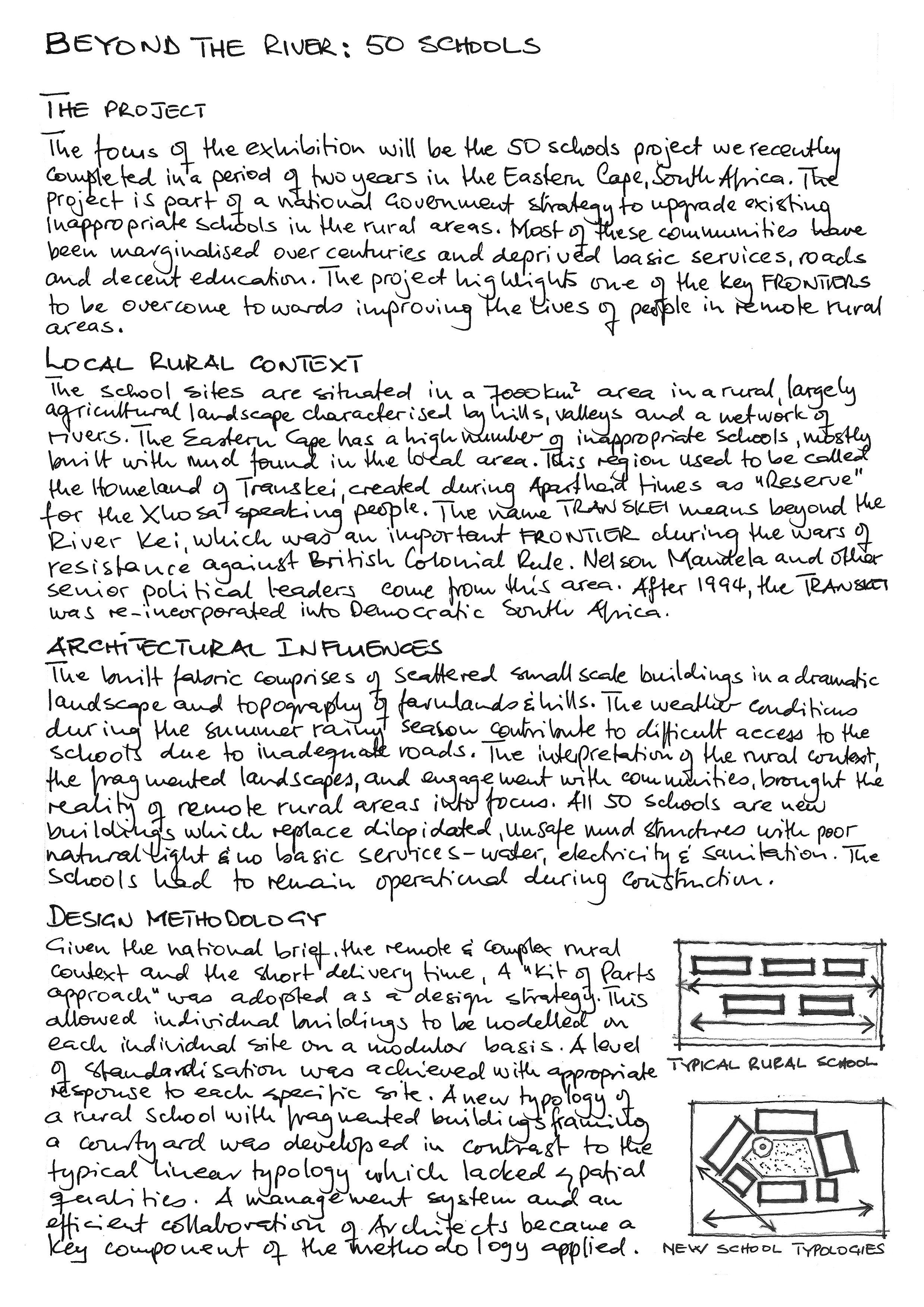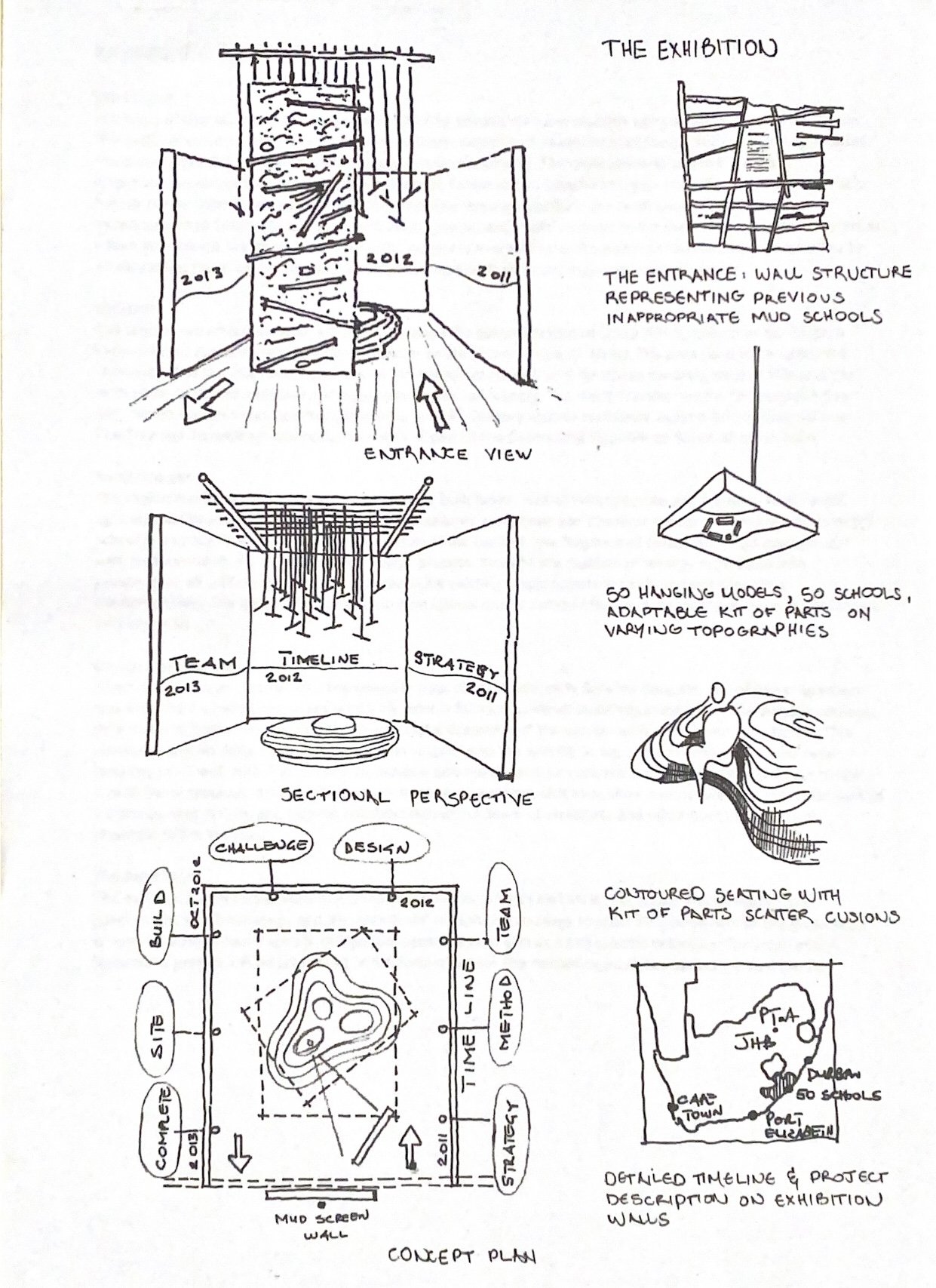2016 Venice biennale, beyond the river: 50 schools











The Project
The focus of the exhibition will be the project of 50 schools we have recently completed in a period of 2 years.
The national project is part of a South African Government and Department of Basic Education strategy, called The Accelerated School Infrastructure Delivery Initiative (ASIDI). The objective is to upgrade existing inappropriate school facilities in rural areas where communities have been marginalised and deprived of basic human rights, such as the right to an education. The strategy also includes employment creation, the enhancement of South Africa's basic education system, and improvements in the lives of the people in the areas where the schools are being built. The ASIDI project is a milestone in the history of South African education to eradicate the historical backlog in infrastructure and basic services, especially in rural areas.
Location
The schools are situated within a 7000km2 area in the eastern region of South Africa, known as the Eastern Cape, which has the highest number of inappropriate schools in South Africa. The area used to be called the "homeland" of the Transkei, a creation of the Apartheid government for Xhosa speaking people. It is also the birth place of Nelson Mandela and other senior political leaders. The word Transkei means "beyond the river Kei", which was an important frontier during the 18" Century wars of resistance against British Colonial rule. The Transkei 'homeland' was reincorporated as part of the Democratic Republic of South Africa in 1994.
Rural Context
The region is remote with a scattered small scale built fabric, lack of infrastructure and a largely rural based agricultural economy. This along with adverse weather conditions and dramatic topography made access to the school sites a big challenge. The interpretation of the context, the fragmented landscapes, and engagement with local communities assisting in the design process, brought the realities of remote rural areas into perspective. All schools were new builds replacing existing inappropriate schools and the sites were predetermined. The schools had to remain operational during construction and the safety of learners was taken very seriously.
Design Methodology
Given national brief, the remote and complex rural context and short delivery time, the 'Kit of Parts' approach was adopted a s a design strategy which allowed individual buildings to be modelled in the site specific context on a modular basis. This was key to the successful execution of the project within the given time frame. This allowed a certain design standardisation and response to the specific topography of each site. A new rural typology of school, with fragmented buildings organised around a courtyard was developed in contrast to the typical linear typology which lacks identity. Another key component to achieve success was the establishment of a management system and intense collaboration with a team of architects and other built environment professionals in the area.
The Exhibition
The exhibition aims to highlight key components of the project on two levels, a national level with the government's ASIDI strategy and the Architects' responding strategy to build 50 Schools within the given time, where the schools had a certain design standardisation as well as a site specific response. The story of the 50xschools project will be presented in the form of a time line narrative, models and audio-visual media.
